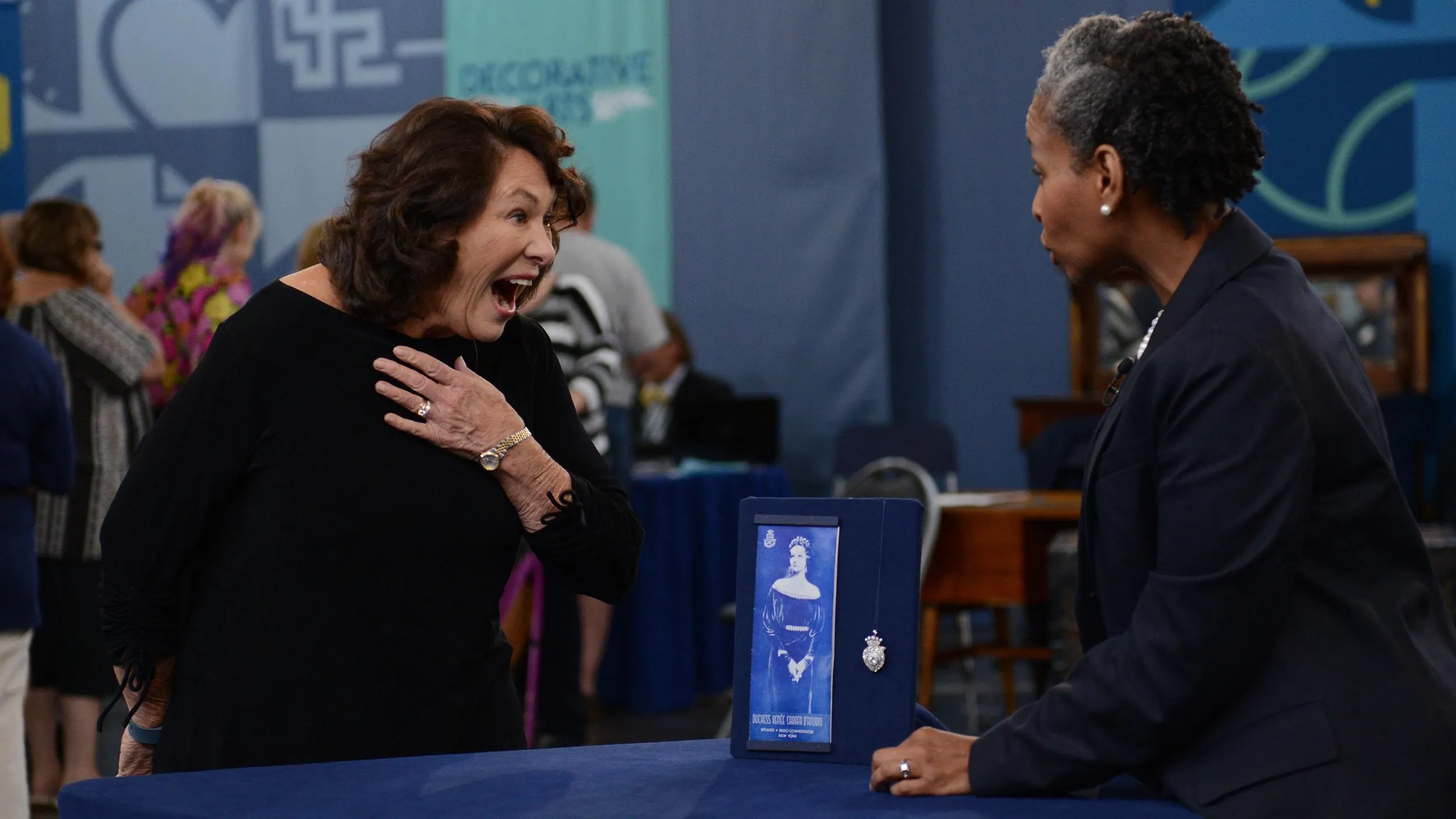GUEST: My husband's father, when he was... I believe he was a teenager, he bought it. And they lived in Nashville, and then when he passed away it was given to my husband. My husband has given it to me to make sure it goes to one of my sons who is a musician, but when he's older. I know that there's one like it in the museum in Nashville, and that's all I know. And that on that little piece of paper at the museum it said it was a reversed inlay Gibson, and that's what I know.
APPRAISER: This is called a Gibson LC. And when the World's Fair was happening in 1933, Gibson made guitars, they made mandolins, and the thing that was different was they put these pearloid or plastic-- it looks like mother of pearl, but it's actually plastic-- on the fingerboards and the headstock, and they were very showy. And people loved them, and they were really popular. And this particular model has a number up inside of it, 939.
GUEST: Mm-hmm.
APPRAISER: And in my research, it looks like that it was made in 1934. They went out of production by the late 1930s. They made a couple after the war started, but then they quit making them. It was a very popular model, so they made a lot of them, but you don't really see them in that good a condition generally. When this guitar was produced, this was the second most expensive model that Gibson made.
GUEST: Oh, wow.
APPRAISER: The thing that appeals to me about a guitar like this is the fact that this body size has a certain sound. And a lot of guys that play blues and fingerstyle guitar love the sound that comes out of these. I think one of the reasons it sounds like that is because you've got a spruce top, which resonates really good. For people who look for things that everybody else doesn't have, this is just a fabulous guitar. One of the other things that we think about today with instruments like this is whether or not it has any endangered species on it, like ivory or Brazilian rosewood. And these inlays, I think, are probably Indian rosewood. They may be Brazilian, but they're a very minor part of the guitar, the construction of the guitar. And the new federal guidelines on that would not prohibit anybody from selling an instrument like this. One of the things that plays into value is condition. It's what I call a player's guitar. It's been played. It's got a few scratches. I've checked around and phoned one of my colleagues who deals in this every day, and he said that a price range on this, probably for insurance purposes, is going to be about $4,000 or $5,000.
GUEST: Very good.



